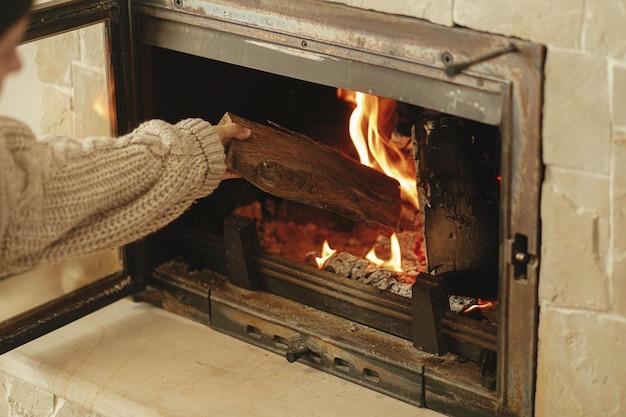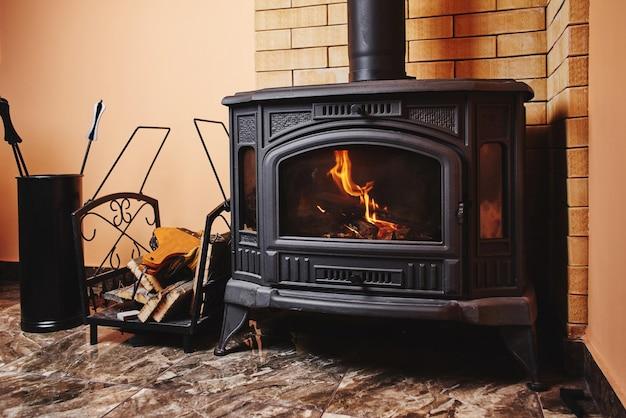Fireplace inserts can be a wonderful addition to any home, providing warmth, ambiance, and even cost savings. However, it’s important to ensure that your fireplace insert is properly sealed to maximize efficiency and prevent any potential issues. In this blog post, we will explore the process of sealing a fireplace insert and answer common questions such as the cost, materials needed, and longevity.
Sealing a fireplace insert involves creating an airtight seal around the insert to prevent any drafts or leaks. This not only helps in maintaining a comfortable temperature but also helps to keep energy costs down. We’ll discuss various methods and materials that can be used for sealing, as well as provide step-by-step instructions to guide you through the process.
So, whether you’re looking to seal an existing fireplace insert or considering installing a new one, this blog post will provide you with all the necessary information to ensure a properly sealed and efficient fireplace. Read on to learn more!
How to Properly Seal a Fireplace Insert
Welcome to our guide on how to seal a fireplace insert like a pro! Whether you’re cozying up for a winter night or trying to keep those energy bills from skyrocketing, properly sealing your fireplace insert is a task that shouldn’t be neglected. In this comprehensive guide, we’ll walk you through the steps to ensure your fireplace insert is sealed tight, keeping you warm and toasty. So, grab your caulking gun and let’s get sealing!
Why is Fireplace Insert Sealing Important
You might be wondering, why bother sealing a fireplace insert in the first place? Well, besides preventing unwanted drafts from entering your home and freezing your socks off, sealing your fireplace insert also helps with energy efficiency. In fact, a properly sealed fireplace insert can save you a bundle on utility bills by preventing heat loss and reducing the need for your HVAC system to work extra hard. It’s like giving your wallet a warm, cozy hug!
Step 1: Gather Your Tools
Before we dive into the juicy tips and tricks of fireplace insert sealing, let’s make sure you have all the necessary tools at your disposal. Here’s a quick checklist:
- Caulking gun (for all your caulking needs)
- High-temperature silicone caulk (the superhero of fireplace sealants)
- Heat-resistant gloves (protect those precious hands, folks)
- Safety goggles (safety first, even in the midst of DIY adventures)
- A sense of humor (because why should sealing a fireplace insert be boring?)
Step 2: Clean and Inspect
Now that you’re suited up and ready to go, it’s time to clean and inspect your fireplace insert. Remove any existing caulk or debris from the areas you plan to seal. Inspect the insert for cracks, gaps, or damage. This is also a great time to ensure your fireplace insert is in tip-top shape, because nobody likes sealing a leaky boat, right?
Step 3: Seal Those Cracks
Ah, the moment you’ve been waiting for – time to seal those cracks like a boss! Load up your caulking gun with the high-temperature silicone caulk and apply a thick, even bead along the seams and edges of your fireplace insert. Make sure to fill in any gaps or cracks, leaving no room for pesky drafts to sneak in. Pro tip: think of the caulk as a superhero cape, protecting your home from those unwanted drafts!
Step 4: Smooth it Out
Now that you’ve laid down the caulk, it’s time to smooth things over. Use a caulk smoothing tool or even a trusty old finger (protected by gloves, of course) to create a neat, seamless finish. This not only makes your newly sealed fireplace insert look professional but also ensures maximum effectiveness in keeping the cold air where it belongs – outside!
Step 5: Let it Cure
We’re almost there, but don’t ignite those cozy fires just yet! Give the caulk some time to cure according to the manufacturer’s instructions. This typically takes anywhere from 24 to 48 hours, depending on the product. Patience is a virtue, my friend, and in this case, it’s important to let the caulk work its magic before putting your fireplace to the test.
Congratulations! You’ve successfully learned how to seal a fireplace insert like a seasoned DIY-er. By following these steps, you’ve not only ensured a warmer and cozier home but potentially saved some hard-earned cash on energy bills. Now, all that’s left to do is sit back, relax, and enjoy the crackling sounds and comforting warmth of your properly sealed fireplace insert. Stay toasty, my friends!
FAQ: How To Seal A Fireplace Insert
Introduction:
Welcome to our comprehensive FAQ guide on how to seal a fireplace insert! Whether you’re a seasoned DIY enthusiast or a newbie in home improvement, this article will provide you with all the answers you need to effectively seal your fireplace insert. From costs to materials and techniques, we’ve got you covered!
How much does it cost to get your chimney waterproofed
Chimney waterproofing costs can vary depending on several factors, such as the size of your chimney, the extent of the waterproofing needed, and the location of your home. On average, you can expect to spend between $500 and $1,500 for chimney waterproofing services.
Can I paint my gas fireplace insert
Absolutely! Painting your gas fireplace insert can be a great way to update its appearance and give your room a fresh new look. However, it’s important to use high-temperature paint specifically designed for use on fireplace surfaces. Regular paint may not be able to withstand the heat and could peel or bubble.
How do you seal a brick fireplace surround
Sealing a brick fireplace surround is a relatively simple process. Start by cleaning the bricks thoroughly to remove any dirt, dust, or debris. Next, apply a brick sealer using a brush or roller, making sure to cover all surfaces evenly. Allow the sealer to dry completely before using your fireplace.
Can you use silicone on a fireplace
Yes, silicone can be used to seal gaps and cracks on a fireplace. It is especially useful for sealing areas around the fireplace insert or where different materials meet. Make sure to use a high-temperature silicone sealant that can withstand the heat generated by the fireplace.
How do you close a fireplace opening
To close a fireplace opening, you can use a variety of methods. One simple option is to install a fireplace cover or screen that fits snugly over the opening. Alternatively, you can use fire-resistant materials such as metal or ceramic to create a barrier, or even opt for a fireplace plug that can be inflated to seal the opening.
How do you cap a fireplace
Capping a fireplace involves installing a chimney cap or top-sealing damper. A chimney cap not only helps keep out rain, debris, and animals but also prevents downdrafts. On the other hand, a top-sealing damper acts as a seal for the flue, closing it off completely when not in use. Both options provide effective ways to cap a fireplace.
Are fireplace inserts sealed
Yes, fireplace inserts are designed to be sealed. They are specially constructed to fit snugly within a fireplace opening, providing increased efficiency and reducing the risk of heat loss. A proper seal ensures that the majority of heat produced by the fireplace is directed into your living space, keeping you warm and cozy.
What do you use to seal a fireplace
There are several materials you can use to seal a fireplace, including high-temperature caulk, fireplace cement, or silicone sealant. These products are heat resistant and capable of withstanding the extreme temperatures generated by a fireplace. Always choose a sealant that is appropriate for the specific needs of your fireplace.
How much does it cost to seal off a fireplace
The cost of sealing off a fireplace will depend on the method you choose and the complexity of the project. Installing a fireplace cover or screen can be relatively inexpensive, ranging from $50 to $500. However, if you require professional assistance or more extensive sealing, costs can range from $500 to $2,500 or more.
How do I fill the gap between my house and chimney
To fill the gap between your house and chimney, you can use a high-temperature mortar or fire-resistant caulk. Carefully apply the mortar or caulk to fill the gaps, ensuring a tight seal. It is important to choose a product that can withstand the intense heat fluctuations that can occur near a chimney.
Is expanding foam fireproof
Expanding foam is typically not fireproof. Standard expanding foam, commonly used for insulation purposes, is flammable and can burn if exposed to flames. Therefore, it is crucial to avoid using expanding foam in areas where it may come into direct contact with a fireplace or the heat it generates.
Is spray foam insulation heat resistant
Spray foam insulation can withstand relatively high temperatures. However, it is essential to choose a specific type of spray foam insulation that is designed for use in high-temperature environments. These heat-resistant spray foams can provide effective insulation without the risk of melting or releasing harmful fumes.
Can you use spray foam around fireplace
It is generally not recommended to use spray foam directly around a fireplace or in close proximity to the heat source it generates. Spray foam is flammable and can pose a fire hazard if exposed to high heat. Instead, opt for fire-resistant insulation materials specifically designed for use near fireplaces.
Can I use Great Stuff fire block around fireplace
Great Stuff fire block is specifically designed to fill gaps and cracks in areas where fire resistance is required. It can be used around a fireplace to seal small gaps and enhance fire protection. However, always follow the manufacturer’s instructions and ensure that the specific product you choose is suitable for your fireplace application.
How do you seal gaps around a fireplace
To seal gaps around a fireplace, start by thoroughly cleaning the area and removing any debris. Use a high-temperature sealant, such as heat-resistant caulk or silicone, to fill in the gaps. Apply the sealant evenly and allow it to cure according to the manufacturer’s instructions for a durable and effective seal.
What is the difference between a fireplace and an insert
The main difference between a fireplace and an insert lies in their installation and functionality. A fireplace is a standalone structure or an architectural feature built into a wall, while an insert is a self-contained heating unit that is installed into an existing fireplace. Inserts are designed for increased efficiency and heat output, while fireplaces are often used for their aesthetic appeal.
How long do fireplace inserts last
With proper maintenance and care, a high-quality fireplace insert can last anywhere from 20 to 30 years or more. Regular maintenance, including annual inspections and cleanings, can help prolong the lifespan of your insert. However, factors such as usage, installation quality, and the type of fuel used can also affect longevity.
How do you seal a fireplace insert
Sealing a fireplace insert starts with inspecting the surrounding areas for gaps, cracks, or leaks. Use a high-temperature sealant, such as fireplace cement or heat-resistant caulk, to fill in these imperfections. Pay close attention to the junction between the insert and the fireplace opening to ensure a proper seal and improve the efficiency of your fireplace.
Conclusion:
We hope this FAQ guide has given you all the information you need to confidently seal your fireplace insert. Remember to choose the right sealants and materials for your specific needs, and don’t hesitate to seek professional assistance if needed. By effectively sealing your fireplace, you’ll not only enhance its performance but also create a safer and more energy-efficient living space. Stay warm and cozy!

